23 Ways To Save Hollywood Money
Pennies down the drain movie style

Terminator 2: Judgement Day (1991)
The Money Shot: The T-1000 proves he’s the better robotic hitman by dissolving into liquid mercury and morphing into various other cast members. Eat that, T-800.
The Cost: $102m was a hell of a lot of money in 1991. To be fair, it still is.
How They Could Have Done It Cheaper: So the T-1000 goes all silvery when he’s morphing? We could accomplish that with some sparkly silver body paint, £5 tops.

Pirates Of The Caribbean: Dead Mans Chest (2006)
The Money Shot: Captain Davy Jones is revealed in all his barnacled, tentacle glory - basically, think human-sized squid with hat.
The Cost: Disney forked out $225m apiece for their follow-ups to Johnny Depp’s swashbuckling Black Pearl , a sizeable amount of which must have gone on all that CG nonsense.
How They Could Have Done It Cheaper: ILM could have saved themselves a pretty penny by purchasing some squid from the local butchers and preserving them with lacquer. Then apply to Bill Nighy's face. Might’ve smelled after a while, mind.

The Parent Trap (1998)
The Money Shot: Hallie and Annie, twins separated at birth, come face to face at a summer camp – and realise that those faces are exactly the same.
The Cost: At $15.5m, The Parent Trap ’s budget was fairly modest – but just think of the time that could’ve been saved if all that fiddling with the cameras and doing double takes hadn’t been involved.
How They Could Have Done It Cheaper: Uh, by hiring actual twins instead of cloning future walking disaster LiLo.

Spider-Man 2 (2004)
The Money Shot: Spidey swings through the city, bringing the comic pages to stunning, breakneck life as our hero scans the streets for wrong-doing.
The Cost: $228m, which is more than most supervillains manage to steal in a lifetime.
How They Could Have Done It Cheaper: Has nobody heard of a crane and a bit of string? Sure there might be a little disruption to the busy streets below, but think of the money you’d save!

King Kong (2005)
The Money Shot: The giant, grizzled monkey emerges from the jungle and snatches Ann Darrow for his plaything. There, high up in the mountains, we marvel at his physical prowess... not to mention general moodiness.
The Cost: Peter Jackson’s re-telling of the 1933 tale cost a mammoth $207m to make.
How They Could Have Done It Cheaper: We know Andy Serkis is a skilled performer, so it’s a wonder nobody thought to pop him in a monkey suit and use some much simpler CG overlay work to expand him in size against a pre-shot backdrop.
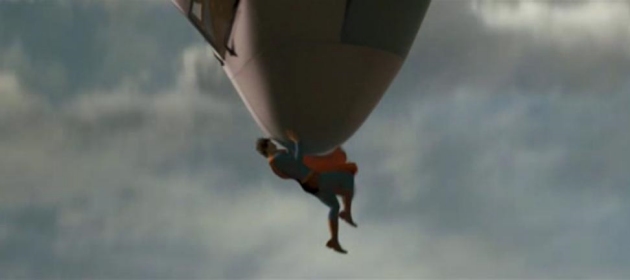
Superman Returns (2006)
The Money Shot: Supes saves a planeload of screaming people (among them, former beau Lois Lane) and sets it down in the middle of a baseball field.
The Cost: Made for $289m, Bryan Singer’s new Supes had a budget over four times that of Richard Donner’s ’78 effort.
How They Could Have Done It Cheaper: Big cardboard plane nose. Man in suit. Big field on a clear-skied day. Easy.

Avatar (2009)
The Money Shot: Jake Sully awakens in his avatar body, flees the human compound and enters into Pandora’s vibrant jungle, which is where things start to get really interesting.
The Cost: With a budget of $500m, this is the most expensive movie ever made. Ever. Though it'll probably sound cheap in ten years.
How They Could Have Done It Cheaper: Ignoring the obvious (blokes in blue paint), surely just shooting in a real jungle (set-dressed to within an inch of its life) would have been better than slaving away over a computer for years on end?

Star Wars Episode I: The Phantom Menace (1999)
The Money Shot: Jar Jar Binks. Yes, yes, the poor flappy fella’s been flogged to hell and back for over a decade now, but he’s still as much of a waste of space (and money) as ever.
The Cost: Lucas had a budget of $115m on his first prequel. Even if we slice that budget into 115 pieces in an attempt to figure out how much the gangly Gungan cost to create, that’s still a lot of money on one annoying character.
How They Could Have Done It Cheaper: By scrapping the pointless, needless CGI and hiring a skilled actor to bring a little charm to the clumsy chap. That or just scrap the fucker completely.

LOTR: The Return Of The King (2003)
The Money Shot: During the Battle of the Pelennor Fields, rampaging Oliphaunts add to the carnage, trampling the enemy under (giant) foot. Most effective battering rams we’ve ever seen.
The Cost: $94 big ones were pumped into this trilogy capper.
How They Could Have Done It Cheaper: We get that these Oliphaunt things are meant to be big, majestic beasts, but did we really need CGI? Drafting in real elephants and rigging them with extra tusks and war paint would’ve been far nicer to the coffers.

Wild Wild West (1999)
The Money Shot: Steampunk never was so wretched, this turgid flick’s money shot coming when Loveless reveals his gigantic robotic spider, which comes with its own flamethrower. Just 'cos.
The Cost: Studios actually shovelled money at this thing, coming up with a budget of $170m. That’d buy us a small house… And a large one.
How They Could Have Done It Cheaper: By not bothering to make it at all. Really, this thing’s unsalvageable. Look, even Will Smith’s angry.
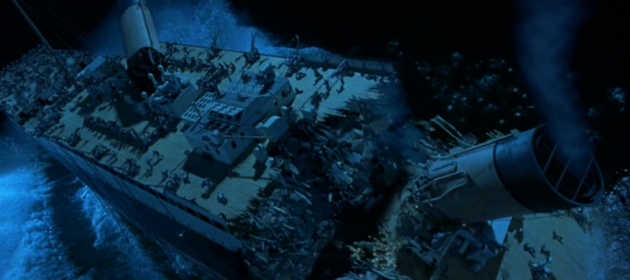
Titanic (1998)
The Money Shot: The mighty vessel, having struck an iceberg, begins to capsize with hundreds of shrieking souls still aboard.
The Cost: Another biggie for James Cameron (does this guy not know the phrase ‘low key’?), Titanic sucking $269m out of financiers’ pockets.
How They Could Have Done It Cheaper: This one would require a little time travel. We’re sure Cameron could invent it for less than $269m, which means he could jump back in time and shoot the actual ship’s capsizing. And probably get a better story out of it, too.
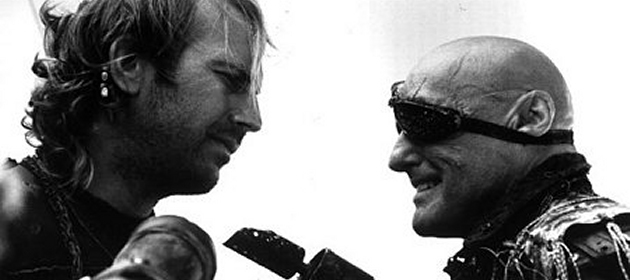
Waterworld (1995)
The Money Shot: Mariner (Kevin Costner) boards the Exxon Valdez, fights with the Deacon and blows up the entire bloomin’ thing. Cue giant explosions and balloon/water ski fights.
The Cost: The movie was budgeted at around $100m, but an out of control production saw its debts run to a staggering $175m.
How They Could Have Done It Cheaper: Miniatures. Smaller, easier to control, cheaper, and much less messy clean up.
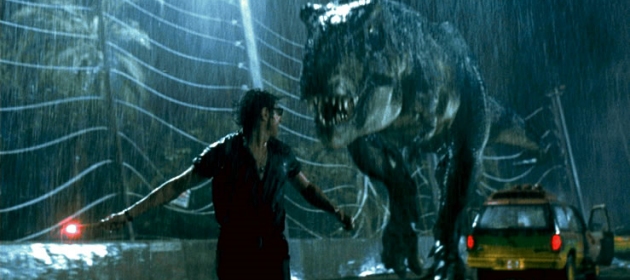
Jurassic Park (1993)
The Money Shot: Trapped in jeeps in the pouring rain, Sam Neill and the Jurassic Park visitors are met with the colossal T-Rex – which quickly and efficiently shows them who’s boss.
The Cost: Steven Spielberg’s pioneering special effects set him back $63m.
How They Could Have Done It Cheaper: Two blokes. One costume. If it works for panto, it'll work anywhere.
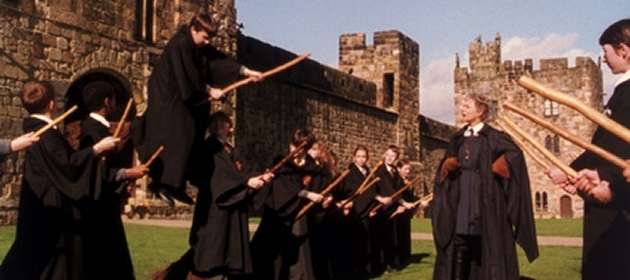
Harry Potter And The Philosophers Stone (2001)
The Money Shot: The class get their first lesson in broomstick riding. Unfortunately, Neville Longbottom isn’t very good at it, his broom whisking him off around the Hogwarts grounds.
The Cost: Chris Columbus’ first stab at the boy wizard franchise set Warner Bros back $125m.
How They Could Have Done It Cheaper: Neville becomes suddenly – and horribly obviously - CGI when he collides with a tower. Scrap the CGI say we, and hire yourself a decent stunt double.

The Mummy Returns (2001)
The Money Shot: Imhotep successfully summons the mighty Scorpion King, who emerges as a half-human, half-scorpion, entirely ropy CG beastie.
The Cost: A snap at just $98m.
How They Could Have Done It Cheaper: Sure the CG gives the Scorpion King greater flexibility than a bloke in rigging, but it’s about as convincing as Sega Master System graphics. Should’ve gotten The Rock into some snazzy prosthetics, if you ask us.
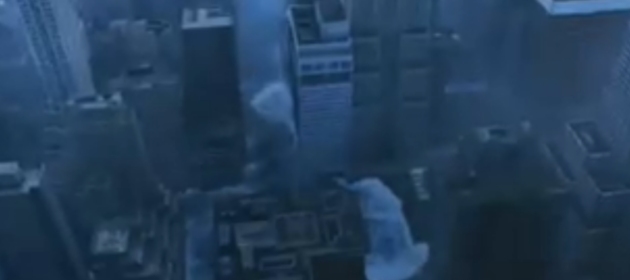
The Day After Tomorrow (2004)
The Money Shot: The end of the world is seriously nigh when the whole of Manhattan is completely flooded.
The Cost: Big budget maestro Roland Emmerich had to keep his eye on a $125m jam jar with his latest apocoflick.
How They Could Have Done It Cheaper: Building a seven foot tall replica of Manhattan might have taken a while, but would’ve been more cost effective, kinder to the eyes of CG wizards, and a great team-building experience for all involved.
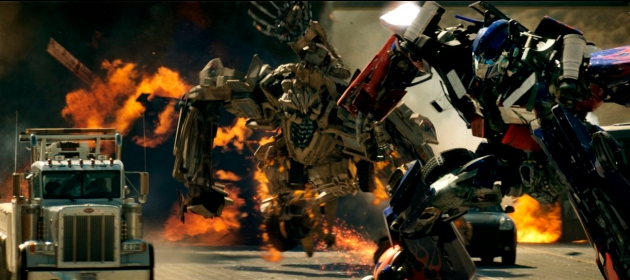
Transformers (2007)
The Money Shot: Optimus Prime is chased down a busy highway by Bonecrusher, wreaking devastation as they go.
The Cost: Those robots in disguise came at a hefty price, draining DreamWorks and Paramount of $150m.
How They Could Have Done It Cheaper: Guys in painted body armour on roller skates. Simples.

Forrest Gump (1994)
The Money Shot: Lieutenant Dan’s had his legs blown off thanks to the Vietnam War…
The Cost: The entire film cost just $55m, though we’re sure a fair heft of that went on getting rid of Gary Sinise’s legs.
How They Could Have Done It Cheaper: The Best Years Of Our Lives hired hand-less Harold Russell when they needed a man with no hands – we'd apply the same thinking to Gump .

Cloverfield (2008)
The Money Shot: After the first bouts of chaos erupt, our intrepid documenter finally surveys the wreckage of the New York streets, which have started to kind of resemble hell.
The Cost: Modest at just $25m, but that’s still $25m more than we’ve got in our bank account.
How They Could Have Done It Cheaper: Head to the crummiest, most falling-apart section of town, and you’ve got your very own setting for alien destruction.

Hannibal (2001)
The Money Shot: Grub’s up! Ray Liotta gets fed his own brain by that most polite of connoisseurs, Hannibal Lecter.
The Cost: A lightweight budget-wise in comparison to others on this list, Ridley Scott had just $87m to play with. Most of that seemed to go on Hannibal’s art collection.
How They Could Have Done It Cheaper: What’s wrong with some old-school Rick Baker prosthetics? Much easier than fiddling around with mo-cap later on.

Benjamin Button (2008)
The Money Shot: Brad Pitt is aged to the nth degree as a backwards growing miracle/freak of nature who’s born old and wrinkly and dies a baby.
The Cost: A whopping $150m was spent transforming the usually pristine Pitt into a scabby, hobbling little thing.
How They Could Have Done It Cheaper: Alright, we get that half the fun was having Brad Pitt’s face morphed into a decrepit old thing, but it’s all a bit self-serving, isn’t it? How about giving other actors in Hollywood a leg-up by casting them as the craggier, more height-challenged ages?

Babe (1995)
The Money Shot: Poor wee pig Babe starts to cry when he’s taken away from his family, and dumped into a family of dogs. Then there’s those three giggling mice…
The Cost: Talking animals don’t come cheap – in fact they cost exactly $30m.
How They Could Have Done It Cheaper: All that fiddly mouth manipulation takes time and money. Next time, do it entirely with puppets instead. It worked for Jim Henson...
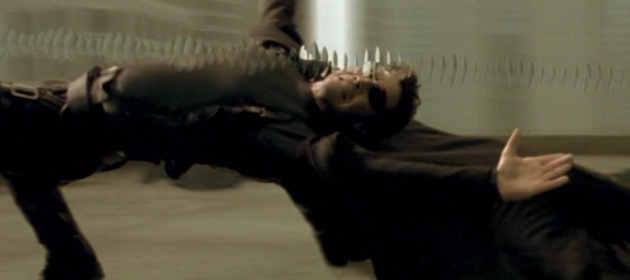
The Matrix (1999)
The Money Shot: Neo is such a quick-thinker that he essentially manages to slow time down in order to dodge bullets – then limbo out of their way.
The Cost: The Wachowskis forked out $63m for their genre-defining, much-imitated modern classic.
How They Could Have Done It Cheaper: The limbo bit’s easy if you’re flexible enough, while the bullet vapours could be reproduced with smoke-trailing pellets. Bullet time our left bum cheek.
Josh Winning has worn a lot of hats over the years. Contributing Editor at Total Film, writer for SFX, and senior film writer at the Radio Times. Josh has also penned a novel about mysteries and monsters, is the co-host of a movie podcast, and has a library of pretty phenomenal stories from visiting some of the biggest TV and film sets in the world. He would also like you to know that he "lives for cat videos..." Don't we all, Josh. Don't we all.


